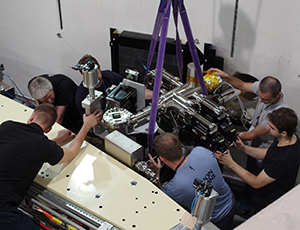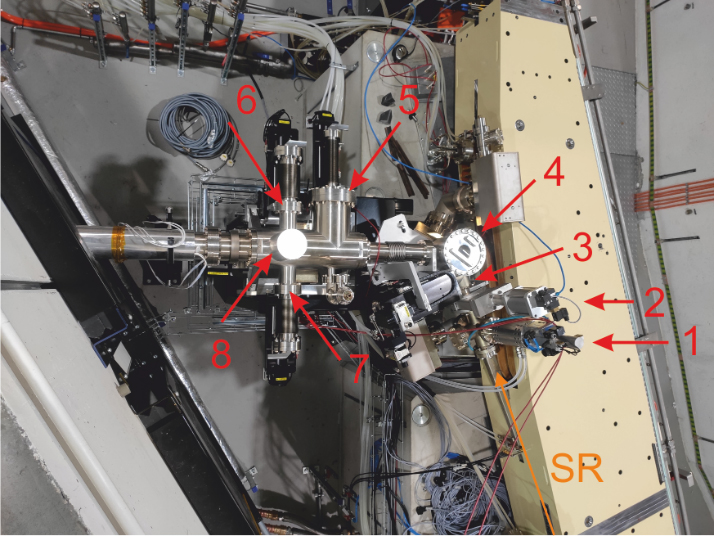
 Web Content Display
Web Content Display
SOLARIS centre
 Web Content Display
Web Content Display
 Web Content Display
Web Content Display
Second diagnostic beamline

On August 23, 2019, the annual summer shutdown came to an end. During this period, the necessary service and maintenance works improving the functioning of accelerators are carried out. The most important tasks this year were transporting the undulator to the synchrotron tunnel and installation of the second diagnostic line.
The undulator will be the source of synchrotron radiation for the beamline with the working name XMCD. The beamline will be equipped with the PEEM (photoemission electron microscope) and STXM (scanning transmission X-ray microscope) end stations. The PEEM branch will also have an octupol station.
Another key job during the summer shutdown was installation of the second diagnostic line components in the storage ring. LUMOS will enable systematic monitoring of the stability and the transversal and longintudinal profiles of the electron beam. It will use synchrotron radiation in the range of visible and UV light. A diagnostic beamline LUMOS has been set-up at bending magnet in 12th sector of the SOLARIS storage ring. It contains a planar mirror with120 deg deflection angle, finger absorber that absorbs the X rays, lens, baffles, diffraction obstacles and filters (see).
The most challenging during the beamline installation was the correct assembly, screwing and positioning of vacuum components. Correct stepper motor control also proved to be a demanding task – says Adriana Wawrzyniak Accelerators Deputy Director
LUMOS beamline will be also equipped with the streak camera and fast photodiode will allow for bunch length, profile and filling pattern measurement and control. That information are important for both the accelerator physicists and users and allow for beam manipulation in a controlled way. Similar beamlines exists in other synchrotrons i.e. MAXIV Laboratory in Lund, Sweden, PSI in Villigen, Switzerland.
The deadline for completing installation and commissioning is scheduled for November this year.
The first diagnostic line was installed and activated in the SOLARIS synchrotron storage ring in 2018. A pinhole line images an electron beam by analyzing the emitted X-rays. Operators can monitor such beam parameters as source position, transverse beam profiles, emittance and skew in real time. Knowledge of these parameters allows us to correct beam instabilities, and a stable beam improves the quality of measurements that are carried out on beamlines.

Diagnostic beamline LUMOS, top view: 1 - absorber, 2 – valve, 3 – cold finger unit, 4 – mirror chamber, 5 – lens unit, 6 and 7 – baffle units, 8 – obstacle unit

